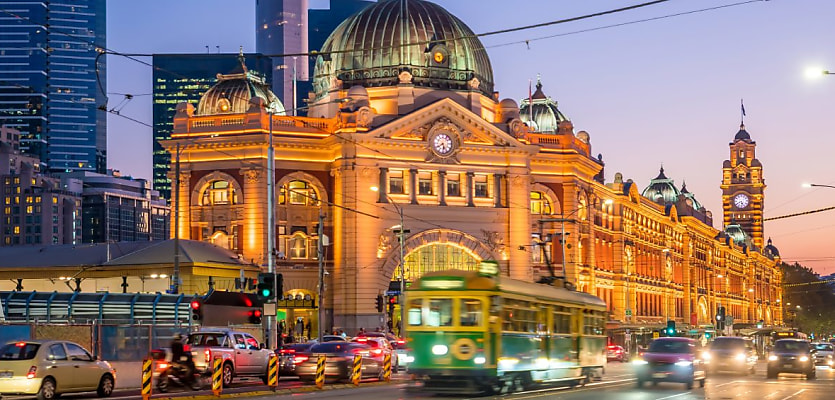Walk the Strip, a report compiled by property agency Fitzroys, has highlighted that the uptake of commercial shopping strip property in the Victorian capital is outperforming pre-COVID levels.
Having been stung by several lengthy lockdowns, it appears Melbourne’s shopping strips’ recovery from the pandemic has well and truly hit its stride, with the average vacancy rates across 36 of the city’s key shopping strips plummeting from 10.3 per cent in 2021 to the current rate of 6.7 per cent.
Among the tightest markets are Brighton’s Church Street, where 0.7 per cent of strip property is currently unoccupied, High Street in Kew, where that figure rises to 2.2 per cent, and Ferguson Street in Williamstown (2.7 per cent.)
Fitzroys’ division director James Lockwood explained that the city’s local shopping strips have rebounded strongly “from the biggest crisis the city has faced in decades”.
Key to this recovery has been the fact that “Melburnians have spent more time than ever in their local communities”.
“Lockdowns, and then the embrace of flexible work arrangements, have seen more Melburnians spending their money close to home, and our villages have reinforced their position as the heartbeat of their local communities,” he said.
The recovery of the city’s food and beverage scene has seen the average proportion of such establishments along the strips reaching 33.4 per cent, a record high that sees the sector account for one-third of tenancies for the first time in history.
Additionally, the report also found that 89 per cent of shopping strips reported an increased uptake of food and beverage services, a historically high figure, while 86 per cent of strips now have food and beverage representation, a rate that exceeds the long-term average.
Mr Lockwood said the momentum of the food and beverage recovery grew during the pandemic, with a “spike in eateries with a focus on takeaway and delivery” experienced as an initial response to COVID “as operators sought to move into smaller spaces with existing kitchen infrastructure”.
Demand for takeaway during the pandemic saw Melburnians spend money at their local shopping village and buy their coffee and lunches from their local cafes and eateries as new research from Roy Morgan indicates that more than double the number of Australians aged 14 and over use a food delivery service app now (33.4 per cent) as opposed to early 2020 (16.9 per cent). In Melbourne, this figure jumps to 40.2 per cent.
“A number of food and beverage operators saw their business as ‘COVID-proof’ through operating in lockdown, and as we’ve transitioned to a COVID-normal environment, they’ve actually seen an increase in turnover,” Mr Lockwood said.
He added that many operators report not requiring a large amount of seating as they concede they “are happy for a predominately takeaway business”.
The strength of the city’s retail economy extends beyond the confines of the food and beverage sector, with Fitroys reporting that Melbourne’s notorious Chapel Street shopping precinct in South Yarra has recorded vacancy rates of 10.7 per cent — a long-term low.
Fitzroys senior manager Lewis Waddell reported that groundwork laid in the six to 12 months preceding COVID assisted in altering tenant expectations, which has consequently flowed through to leasing activity.
“We’re seeing deals transact in Chapel Street, South Yarra. Tenants are finding the demographic opportunities on Chapel Street so appealing they have been optimising their position as well as actually moving from another retail strip into Chapel Street,” he said.
Other key findings from the Walk the Strip report include:
- Specialty tenancies hit a long-term low, falling from 37.7 per cent in 2017 to 30.9 per cent, as 72 per cent of strips report decreases in the proportion of specialty tenants since the dawn of COVID.
- The presence of service retail has dipped by nearly 3 per cent to 26 per cent since 2019, as hair, beauty and nail salons, and gyms were shunned during the pandemic.
- Rent collection has also returned to pre-COVID levels.
- Vacancies earmarked for developments now make up 3.1 per cent of shopping strips.

Never miss a beat with
Stay across what’s happening in the Australian commercial property market by signing up to receive industry-specific news and policy alerts, agency updates, and insights from reb.
Subscribe to reb Commercial:









You are not authorised to post comments.
Comments will undergo moderation before they get published.